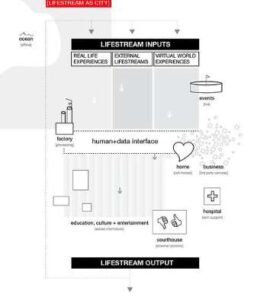Contents
In the post-independence period, India’s exchange rate policy has seen a shift from a par value system to a basket-peg and further to a managed float exchange rate system. The study shows the exchange rate volatility has a positive influence on Gross Domestic product, Foreign Direct Investment and Trade Openness, but with negative influence hero broker review on the inflationary rate in the country. Capital account- It refers to transactions for investment purposes and consists of a nation’s transactions in financial instruments and central bank reserves. Including data on central bank intervention (Model 4′) helps to improve forecast accuracy further especially at the longer end.
What is the Floating Exchange Rate?
A floating exchange rate is a fiscal policy adopted by certain countries where their currency’s value is allowed to fluctuate in line with prevailing market forces.
When the domestic interest rate rises relative to the foreign rate, it is because there has been a contraction in the domestic money supply relative to the domestic money demand without a matching fall in prices. The higher interest rate at home attracts a capital inflow, which causes the domestic currency to appreciate. This model retains the assumption of stability of the money demand function and uncovered interest parity but replaces instantaneous purchasing power parity with a long-run version. Though customers are a major player in the foreign exchange market, for all practical purposes they depend upon ADs and brokers. In the spot foreign exchange market, foreign exchange transactions were earlier dominated by brokers, but the situation has changed with evolving market conditions as now the transactions are dominated by ADs. The Reserve Bank like other central banks is a market participant who uses foreign exchange to manage reserves and intervenes to ensure orderly market conditions.
This in turn would lower the risk of deflationary recession manifold. For advanced students, it will be interesting to note that fixed and managed regimes share some disadvantages. It is partly due to the ability that countries with fixed exchange regimes can knowingly devalue their currency. In 2019, the daily trade value reached up to $6.6 trillion, within one day. Not only is it a marketplace for exchange and speculation, it is also an avenue for settling international transactions.
The concept of floating exchange rate
The amount you would be able to purchase would depend on the exchange rate. The market determines the currency value, which is known as an exchange rate, it tells you how much your currency is worth in foreign currency. The then-Government finally decided to let market forces decide exchange rates. A transition system – termed Liberalised Exchange Rate Management System Why are stock trainer app for traders and how to choose them correctly or LERMS, was set in place. According to numbers made public by the Reserve Bank of India, more than 40% of all countries use some sort of a managed floating regime. Without the guiding hand of Governments and their respective Central Banks, countries including Algeria, Argentina, Croatia, Egypt, Romania, Singapore, and Ukraine would face rising foreign exchange costs.
What are the advantages and disadvantages of a fixed exchange rate?
There are pros and cons to using a fixed exchange rate. The pros are that it eliminates market volatility and gives stability to financial markets. The cons are that it can lead to increased inflation and decreased competitiveness.
The customer segment of the spot market in India essentially reflects the transactions reported in the balance of payments – both current and capital account. During the decade of the 1980s and 1990s, current account transactions such as exports, imports, invisible receipts and payments were the major sources of supply and demand in the foreign exchange market. It needs to be observed that in India, with the government having no foreign currency account, the external aid received by the Government comes directly to the reserves and the RBI releases the required rupee funds. Hence, this particular source of supply of foreign exchange e.g. external aid does not go into the market and to that extent does not reflect itself in the true determination of the value of the rupee. With liberalization and development of foreign exchange and assets markets, variables such as capital flows, volatility in capital flows and forward premium have also became important in determining exchange rates. Furthermore, with the growing development of foreign exchange markets and a rise in the trading volume in these markets, the micro level dynamics in foreign exchange markets have increasingly became important in determining exchange rates.
Simultaneously, they also provide flexibility in the case of the country subject to a foreign exchange inflow. However, in extreme situations, the Central Bank intervenes and lends support. A revision in the interest rates of a nation may have a bearing on the exchange rates of other economies too. For example, an interest rate hike in the US may lead to a reduction in the value of the Indian Rupee because the investors with access to global markets may withdraw capital from India and invest it in the US. Essentially, changes in interest rates of developed countries with established economies have an impact on the exchange rates of developing nations.
Table 3: Inflation in Bangladesh and Selected South
The empirical literature on exchange rate determination is analyzed next. The market-based operations led to a progressive reduction in the quantum of securities with the Reserve Bank. In the face of large capital flows coupled with declining stock of government securities, the Reserve Bank of India introduced a new instrument of sterilisation, viz., the Market Stabilisation Scheme to sustain market operations. Since its introduction in April 2004, the MSS has served as a very useful instrument for medium term monetary and liquidity management. Besides maintaining orderly conditions, markets are perceived as efficient when market prices reflect all available information, so that it is not possible for any trader to earn excess profits in a systematic manner. The efficiency/ liquidity of the foreign exchange market is often gauged in terms of bid-ask spreads.
In response to this study, some of the studies tried to improve the forecasting performance of the monetary models using advanced techniques. Some other studies gave up the monetary model and tried to improve the forecasting performance of exchange rates using pure technical time series techniques. There were also studies that tried to explain the movement of the exchange counter trend line rate through a suitable economy-wide macroeconometric model capable of capturing all complex associations between exchange rate and other variables. For example, using an economy-wide macro econometric model for Italy, Gandolfo and Padaon and Gandolfo have shown that an economy-wide model beats the random walk in out-of-sample forecasts of the exchange rate.
.jpeg)
The parameter w measures the standard deviation on the first own lag and describes the overall tightness of the prior. The tightness on lag m relative to lag 1 equals the function g, assumed to have a harmonic shape with decay factor d. The tightness of variable j relative to variable i in equation i equals the function f.
2 Inflation Situation
Reflecting these trends, the share of India in global foreign exchange market turnover trebled from 0.3 per cent in April 2004 to 0.9 per cent in April 2007. This negates the findings of the seminal study by Meese and Rogoff that finds that models which are based on economic fundamentals cannot outperform a naive random walk model. The foreign exchange market in India today is equipped with several derivative instruments. These derivative instruments have been cautiously introduced as part of the reforms in a phased manner, both for product diversity and more importantly as a risk management tool.
Consequently, the supply of money increases, and the value of the domestic currency depreciates. The purpose of a fixed exchange rate system is to keep a currency’s value within a narrow band. Governments usually fix an exchange rate to give their own currency stability and make financial and trade transactions consistent and predictable. In 1971, concerned that the U.S. gold supply was no longer adequate to cover the number of dollars in circulation, President Richard M. Nixon declared a temporary suspension of the dollar’s convertibility into gold.
This study concentrates on the post March 1993 period and provides insights into forecasting exchange rates for developing countries where the central bank intervenes periodically in the foreign exchange market. The alternative forecasting models are estimated using monthly data from July to December 2006 while out-of-sample forecasting performance is evaluated from January 2007 to June 2008. This study negates the finding of the seminal Study by Meese and Rogoff that models which are based on economic fundamentals cannot outperform a naive random walk model. It does this to gain back the confidence of big businesses and important investors, which might weaken because of great fluctuations in the market forces.
On the contrary, the floating rate bonds have floating coupons, which are in line with the market rates. Hence, whenever there is an increase in interest rates, only its coupon rates rise without correction in bond prices. The depreciation mainly occurs due to the unfavourable balance of payments situation. They are mostly characterised by ‘managed floating’ exchange rate regimes or some version of a ‘pegged’ regime.
Disadvantages of Investing in a Floating Rate Bond
As the interest on a floating loan rate changes regularly, the monthly EMIs changes as well. This can add a certain level of instability to your monthly financial planning. It is also important to know that you can only experience savings if the floating interest rate on a Home Loan does not remain above 11.5% per annum for a long time. Even if the floating rate climbs higher than the fixed rate in the future, due to the volatile nature of the interest it will fall eventually. So, in other words, the floating interest rate can help you save a considerable amount of money while repaying the Home Loan.
Please do not believe any entity using Axis Bank logos & branding to request the public for money in exchange for opening a Customer Service Point. Just upload your form 16, claim your deductions and get your acknowledgment number online. You can efile income tax return on your income from salary, house property, capital gains, business & profession and income from other sources. Further you can also file TDS returns, generate Form-16, use our Tax Calculator software, claim HRA, check refund status and generate rent receipts for Income Tax Filing. ClearTax offers taxation & financial solutions to individuals, businesses, organizations & chartered accountants in India.
- Out of the two currencies which are considered, the weaker currency is pegged with the stronger currency by either the government or the central bank of the domestic country through the purchase of foreign exchange.
- Now that you know the floating rate bond definition, you can consider diversifying your portfolio by buying floating rate bonds.
- The empirical performance of these theoretical models in forecasting and explaining exchange rate behaviour is crucial in determining the superiority of one theory over the other.
- As a result, you will have to lower the price of your bond to increase its yield.
- In the case of VAR models, the superiority of Model 3′ was established in the longer term forecasts whereas in the BVAR case, this is true of all forecast horizons.
The focus is on the exchange rate of the Indian rupee vis-à-vis the US dollar, i.e., the Re/$ rate. In India, the liquidity impact of large capital inflows was traditionally managed mainly through the repo and reverse repo auctions under the day-to-day Liquidity Adjustment Facility . The LAF operations were supplemented by outright open market operations , i.e. outright sales of the government securities, to absorb liquidity on an enduring basis. In view of the large capital flows during the past few years, relaxations were effected in regard to outflows, both under the current and capital accounts. In addition, changes in policies are made from time to time to modulate the debt-creating capital flows depending on the financing needs of the corporate sector and vulnerability of the domestic economy to external shocks.
Flexible exchange rates eliminate the need for central banks to hold international reserves. Loans and Borrowings – Loans are further classified into external assistance, medium and long-term commercial borrowings and short-term borrowings. Loans and borrowings by a country from the foreign countries or from the international money market are recorded in the Capital Account of the BOP. These borrowings can be in the form of commercial borrowings or in the form of assistance.

The flexible exchange rate is largely determined by market mechanism i.e. use of forces of demand and supply. However, exchange rate policy is still a source of exasperating and appropriate choice is by no means clear. Economists do not provide clearly answers whether a country should allow its currency to float. According to Jhigan , the variables that influence the exchange rate includes country’s exports, imports and structural influences.

To reduce this risk, they can invest in high rated bonds or choose government-issued bonds with zero default risk. Similarly, when the interest rates go down, the coupon rates also fall, reducing the yields to the investor. Therefore, investors can choose to invest in these bonds when the interest rates are low and will rise in the future.
From the above, the relationship between foreign exchange rates and interest rates is highly interdependent. The current account of a country reflects the country’s trade balance and foreign investment revenues. It is made up of the entire number of transactions, such as exports, imports, debt, and so on. A current account deficit occurs when a country spends more of its currency on goods imported than it earns. When a small country ties its currency to a superpower, such as the United States or the European Union, it protects itself from having to pay more for imported goods from developed countries. When the US economy expands, the currency appreciates, making imports more expensive for smaller countries.
